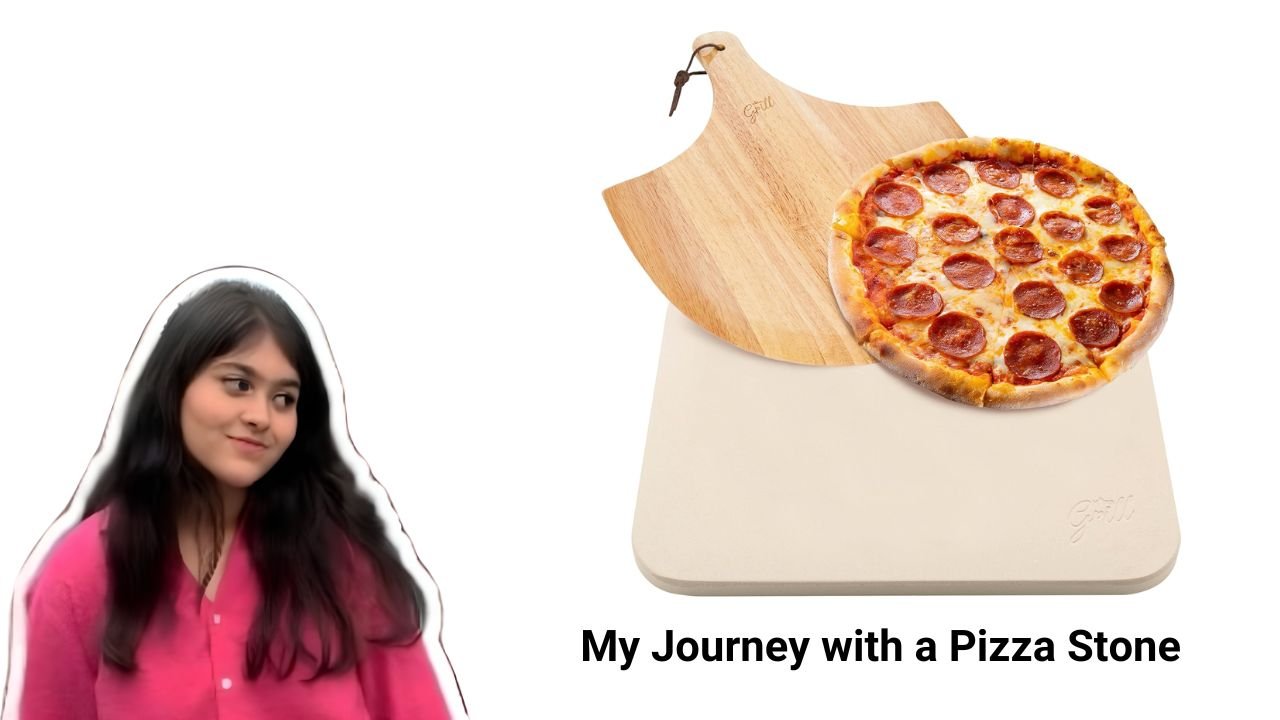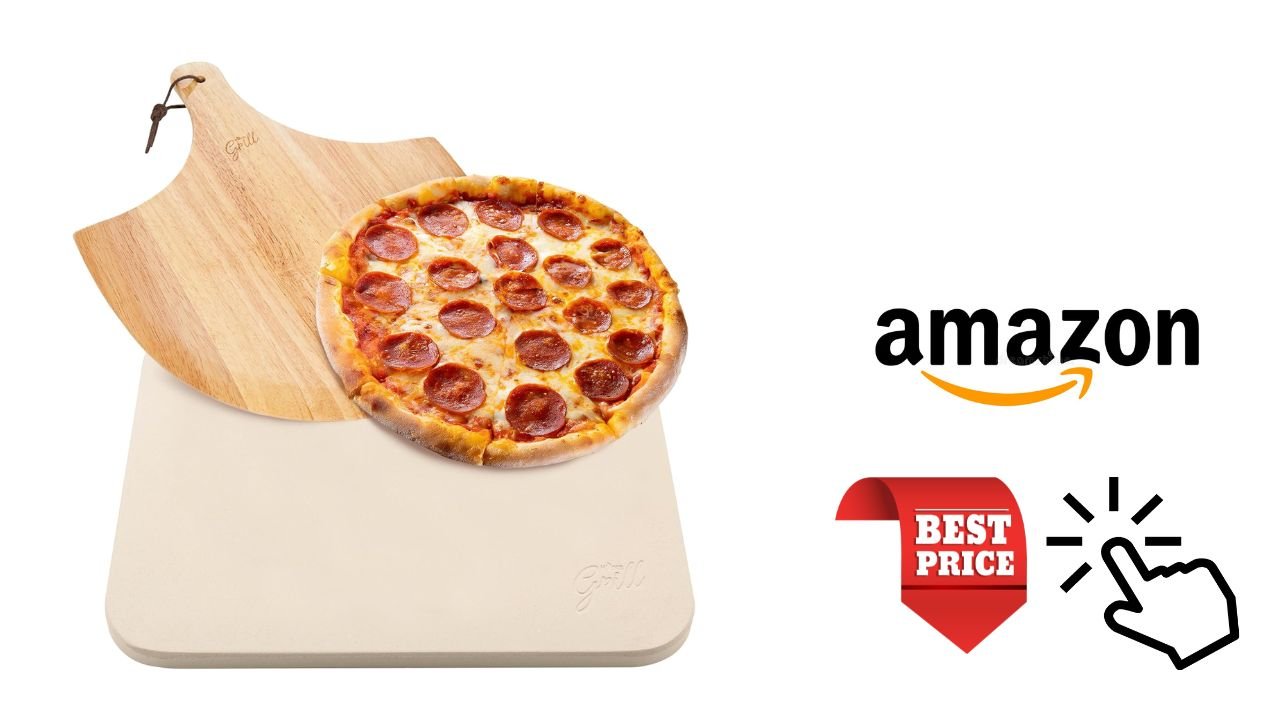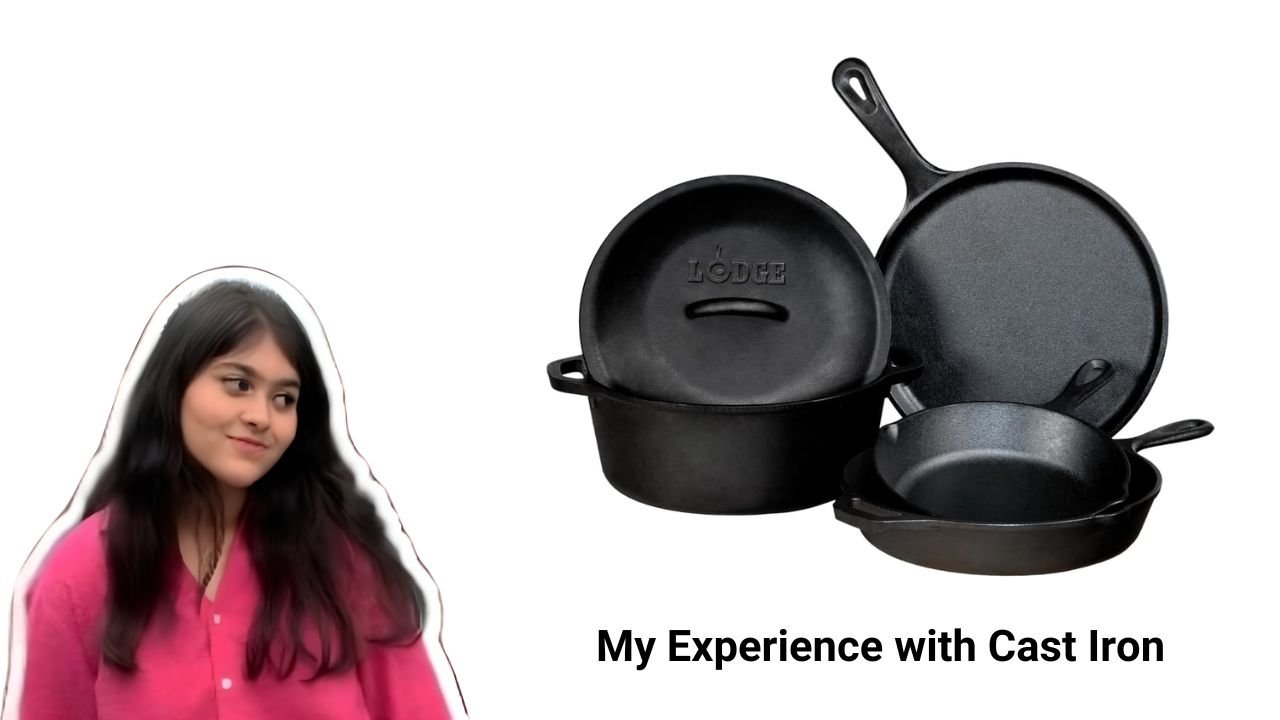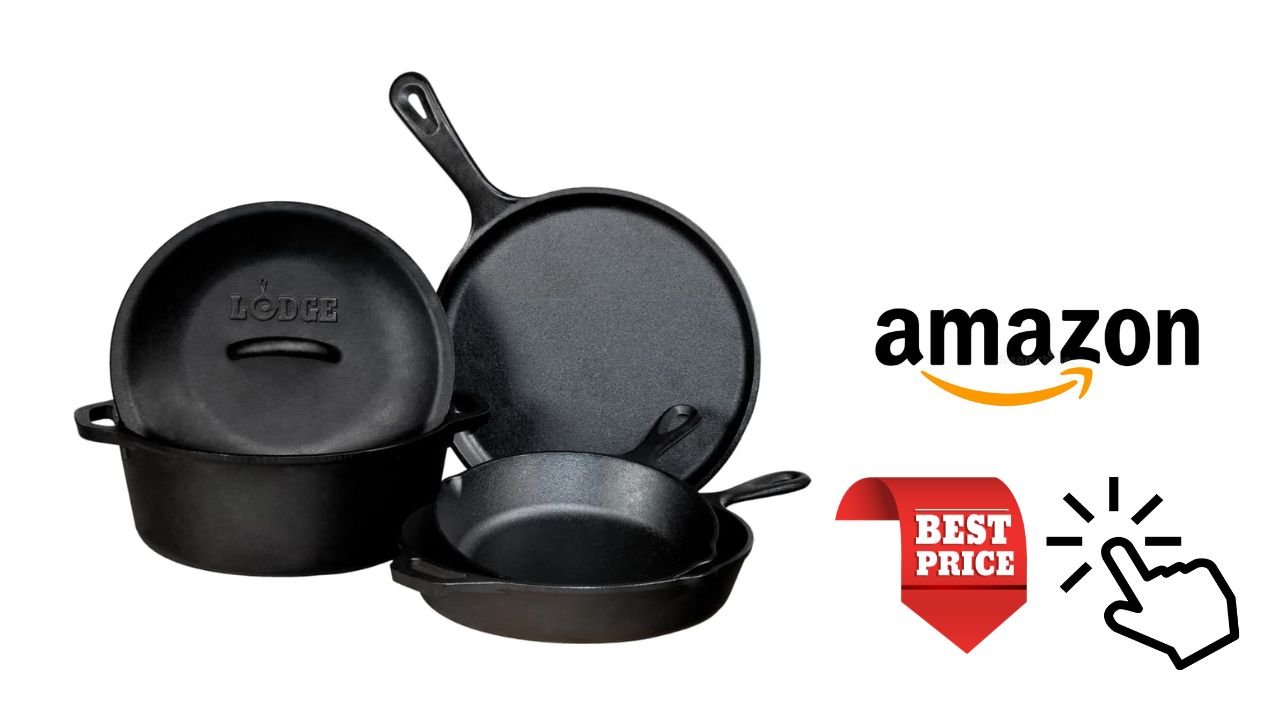In the Pizza Stone vs Cast Iron comparison, pizza stones are ideal for crispy, thin crusts, while cast iron offers better heat retention, making it perfect for thick crusts and versatile cooking.
Making perfect homemade pizza is an art, and like every masterpiece, it requires the right tools. One of the biggest debates among pizza enthusiasts is Pizza Stone vs Cast Iron. Both promise crispy crusts and restaurant-quality results, but which one works best for your kitchen and style? As someone who’s tested both extensively, I’m here to share my experience and help you decide.
Whether you love a thin, crispy crust or a chewy, deep-dish masterpiece, your choice between a pizza stone and cast iron can make all the difference. Let’s explore the benefits, drawbacks, and unique qualities of each tool to elevate your pizza nights!
The Basics of Pizza Stones and Cast Iron
Before diving into comparisons, let me explain the key features of each.
What Is a Pizza Stone?
A pizza stone, or baking stone, is made of ceramic, clay, or cordierite. Its porous surface absorbs moisture, ensuring your pizza crust bakes evenly and crisply. It mimics the intense heat of a traditional brick oven, making it ideal for flatbreads, artisan pizzas, and even cookies.
What Is a Cast Iron Pizza Pan?
A cast iron pizza pan is a heavy-duty, multi-purpose tool that excels in retaining heat. It’s like the Swiss army knife of cookware—perfect for deep-dish pizzas, skillet baking, and even roasting vegetables. Once seasoned, it develops a natural non-stick surface, making cooking and cleaning a breeze.
My Journey with a Pizza Stone
When I first tried a pizza stone, I was excited about recreating that authentic, crispy crust. But my initial attempt flopped because I skipped the essential step: preheating. Lesson learned! Over time, I discovered its true potential and tricks for making it work.
Why I Love My Pizza Stone
- Even Heat Distribution: A pizza stone ensures the crust bakes evenly, preventing undercooked spots.
- Versatility: It’s great not just for pizza but also for baking bread, flatbreads, and pastries.
- Lightweight: Easy to handle compared to bulkier cookware.
- Crisp Crusts: Its porous nature draws moisture away from the dough.
The Downsides of a Pizza Stone
- Fragility: Pizza stones are prone to cracking if dropped or exposed to sudden temperature changes.
- Time-Consuming: Preheating takes 30–45 minutes, which might feel like forever when hunger strikes.
- Tricky Cleaning: You can’t use soap; only a scraper and damp cloth are safe.
Tips for Perfect Results
- Always preheat the stone to ensure even cooking.
- Sprinkle cornmeal or flour to prevent sticking.
- Let the stone cool completely before cleaning it to avoid cracks.
My Experience with Cast Iron
When I switched to a cast iron pizza pan, I was curious but skeptical. Could it rival my trusty pizza stone? My doubts disappeared the moment I tasted my first cast iron pizza—a crispy crust with a chewy center, cooked to perfection.
Why Cast Iron Stole My Heart
- Unbeatable Heat Retention: Cast iron holds heat better than any tool I’ve used. The crust cooks evenly and stays hot longer.
- Durability: It’s nearly indestructible. With proper care, it can last a lifetime.
- Multi-Purpose Use: Beyond pizza, I’ve used it for roasting veggies, searing steaks, and baking desserts.
- Non-Stick Surface: Once seasoned, nothing sticks, making cleanup hassle-free.
Challenges with Cast Iron
- Heavy: Handling a hot, heavy pan requires strength and caution.
- Handles Get Hot: Always use oven mitts to avoid burns.
- Maintenance: Regular seasoning is necessary to maintain its non-stick properties.
Pro Tips for Cast Iron Success
- Preheat the pan for a crispy crust.
- Sprinkle cornmeal to prevent dough from sticking.
- Avoid overloading toppings to ensure even cooking.
- Re-season after each wash to keep it in top condition.
Comparing Pizza Stone vs Cast Iron: The Key Differences
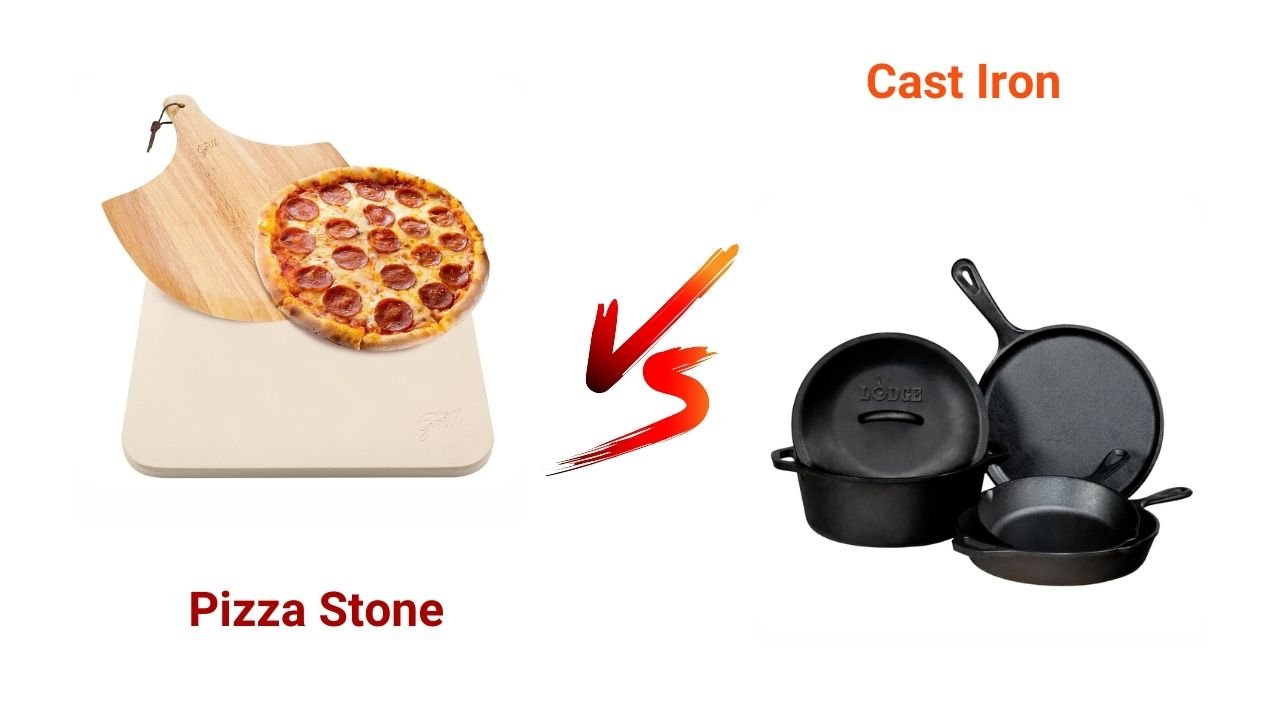
Both tools have their strengths, but choosing the right one depends on your cooking style and needs. Here’s a detailed comparison:
| Feature | Pizza Stone | Cast Iron Pizza Pan |
|---|---|---|
| Heat Retention | Moderate, ideal for light, crispy crusts. | Exceptional, perfect for deep-dish pizzas. |
| Preheating Time | Longer (30–45 minutes). | Shorter (10–15 minutes). |
| Durability | Prone to cracking under stress. | Virtually indestructible. |
| Versatility | Limited to baking. | Multipurpose (baking, frying, roasting). |
| Ease of Use | Lightweight, beginner-friendly. | Heavier, requires seasoning. |
| Cleaning | Requires scraping, no soap. | Wipes clean, seasoning needed. |
Why Heat Distribution Matters
The way heat spreads through your cooking tool determines whether your pizza crust is a masterpiece or a disappointment.
- Pizza Stone: Its porous surface absorbs moisture and distributes heat evenly, preventing soggy crusts.
- Cast Iron: Holds and radiates heat like a pro, ensuring crispy edges and a chewy center.
Winner: Cast Iron for superior heat retention, but Pizza Stone wins for thin, artisan crusts.
Durability: Which Lasts Longer?
Durability is a crucial factor for frequent pizza makers.
- Pizza Stone: Fragile and susceptible to cracks.
- Cast Iron: Tough and built to last decades with care.
Winner: Cast Iron takes the crown for being nearly indestructible.
Versatility in the Kitchen
When investing in kitchen tools, versatility adds value.
- Pizza Stone: Limited to baking pizza, bread, and cookies.
- Cast Iron: A true multitasker, suitable for stovetop cooking, grilling, and oven use.
Winner: Cast Iron for its unmatched versatility.
Which Is Easier to Use?
Ease of use can make or break your cooking experience.
- Pizza Stone: Lightweight and beginner-friendly.
- Cast Iron: Heavy, with a learning curve for seasoning and handling.
Winner: Pizza Stone is more accessible for beginners.
Value for Money: The Final Verdict
Long-term value is about more than the price tag.
- Pizza Stone: Affordable but may require replacement if cracked.
- Cast Iron: Higher upfront cost but lasts a lifetime.
Winner: Cast Iron offers better value over time.
Read More: Roasting Pan vs Electric Roaster: Lessons I Learned
FAQs About Pizza Stone vs Cast Iron
What’s the main difference between a pizza stone and cast iron?
A pizza stone is best for thin, crispy crusts, while cast iron excels at thick, chewy pizzas with crispy edges.
Which heats up faster, a pizza stone or cast iron?
Cast iron heats up faster and retains heat longer than a pizza stone.
Are pizza stones or cast iron more durable?
Cast iron is virtually indestructible, while pizza stones are prone to cracks.
Can I use a pizza stone or cast iron on a grill?
Yes, both can be used on a grill, but cast iron is more durable under intense heat.
Which is easier to clean, a pizza stone or cast iron?
Cast iron is easier to clean, as it only requires wiping and occasional seasoning.
Do pizza stones or cast iron need seasoning?
Only cast iron requires seasoning to maintain its non-stick surface.
What’s better for beginners: pizza stone or cast iron?
Pizza stones are lightweight and simpler for beginners, while cast iron requires more skill.
Which tool is more versatile: pizza stone or cast iron?
Cast iron wins for versatility, as it can be used for baking, frying, and roasting.
Conclusion: Pizza Stone vs Cast Iron – Which One Should You Choose?
Ultimately, the choice between a pizza stone and cast iron comes down to your preferences:
- Go for a pizza stone if you love thin, artisan pizzas and want a lightweight, easy-to-use tool.
- Choose cast iron if you value durability, versatility, and crave pizzas with crispy edges and chewy centers.
Both tools have their place in the kitchen, but for me, cast iron reigns supreme for its all-around performance. Whichever you pick, one thing is certain—your homemade pizza nights are about to get a whole lot better!

Hey, I’m Nandoza Ahammad, passionate food enthusiast and creator of narzcookingcave.com, shares delicious recipes and cooking tips worldwide.

